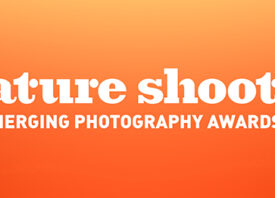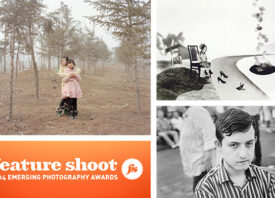Search this site
CENTER Santa Fe’s Laura Wzorek Pressley Offers Advice for Emerging Photographers

Since its founding in 1994, the not-for-profit organization CENTER has nurtured a generation of socially and environmentally engaged photographers and lens-based artists. Their grants, awards, programs, and exhibitions have helped amplify the voices of talents ranging from the photojournalist Anastasia Taylor-Lind to the multidisciplinary artist Laia Abril, many of whom have helped spark important conversations about history, social justice, and photography’s role in opening minds and influencing our futures.
Laura Wzorek Pressley has been at CENTER for more than fifteen years, helping to shape its programming and launch the careers of countless photographers. This year, we’re thrilled to have her as one of the judges for the Series category at the Feature Shoot Emerging Photography Awards. In anticipation of our final deadline on September 3rd, 2021, we had the chance to catch up with her via email.
What has been one of your proudest moments or accomplishments as Executive Director at CENTER?
“I secured a number of grants for the organization providing financial stability and programming. They provide much more than funds, as we are primarily an artist service organization, the grants help us move beyond the professional development programs to influence and expand the way the organization serves the public. They also allow for experimentation.
“We just secured a grant this year from the National Endowment for the Humanities for a lecture series called The Democratic Lens: Photography and Civic Engagement. We are so excited to implement that, hoping it reaches beyond the precincts of the art and photography communities, to engage a broad audience.

You’ve helped launch the careers of several prominent photographers. Are there any projects, in particular, that have stayed with you over the years?
“I remember calling on the phone in 2006 a then-green Julie Blackmon about her receiving an award from CENTER. Her work is still a favorite. It was so well constructed, courageous use of color, and relatable. Also, in 2010, Dana Popa’s work Not Natasha won the Project Award and that body of work was about sex slavery in Eastern Europe. Sex trafficking wasn’t in the news then like it is now. That was eye-opening and heart-wrenching body of work with haunting imagery that lingered.”

How have you seen the photo industry change over the last decade, and what have those changes meant to you?
“From the consumer perspective, the last two decades I have seen a significant change. The inflection point was in 2006: camera phones surpassed sales of both digital and film cameras. The rising and falling of the popularity of Instagram has been fascinating to watch. I’ve also been watching the growing use of computational imaging and filters.
“In terms of the photo industry, the consumption of images and content in the editorials has not seemed to slow down. A main change was the rise of the Photo Festival, which was a boon for photographers, storytellers, editors, curators, and the industry as a whole and new way to interact with photography.
“At one point, I counted at least 152 photo festivals across the world which was a celebratory way to bring outstanding work to a larger audience; in contrast to the more contemplative book or traditional exhibition experience. We are very pleased to have a Photo Festival in New Mexico which has a history of excellence in photography, and we aim to contribute to that legacy by gathering people around the campfire for storytelling in a profound sense of place.
What advice would you give to emerging photographers who are just starting their careers and looking for grants, mentorships, and more?
“They should get together a body of work that they are obsessing about, images that work well together. It can be a story or a psychological landscape or an aesthetic, as long as it makes visual sense. Then write over and over and over again a project statement. Find the deepest meaning of the work that is most universal, and make that personal work universal. At that point, start applying to mentorships and portfolio reviews. Here are a few good ones:
CENTER’s Review Santa Fe also offers mentorships for incoming photographers. We also have several grants for photographers that we administer in January-March each year.
Photolucida are two long-standing reviews with fantastic reviewers. They also have a great program called Critical Mass, where you can apply with a project and get it seen by 200 reviewers.
Magnum Photos has a mentorship program with several of their photographers.
“I also recommend applying to group exhibitions for photographers. There are some great non-profit organizations with ongoing group shows. Center for Fine Art Photography and the Center for Photographic Art are two of them, where those just starting out can be part of an exhibition.”
What kind of work will you be looking for when judging the 7th Annual Feature Shoot Emerging Photography Awards?
“I’m hoping to see something surprising, that is a fresh perspective on our times. I am also interested in the intersection of arts and advocacy of vulnerable and underrepresented communities. I am partial to works that transcend boundaries of all kinds.”
This year’s Emerging Photography Awards comprises two categories, one for single images and another for series. Learn more about the awards, our judges, and our prizes over on our website.


